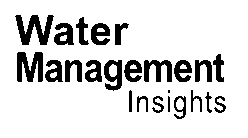In the heart of Bangladesh, where the world’s longest sea beach at Cox’s Bazar and the historic Silk Route city of Rajshahi draw tourists from far and wide, a silent threat lurks beneath the surface. Contaminated water, tainted by industrial discharge and agricultural runoff, poses a significant health risk to visitors. Enter Md. Ashraful Islam, a researcher from the Department of Information and Communication Engineering at the University of Rajshahi, who has developed an innovative solution to this pressing problem.
Islam’s intelligent Internet of Things (IoT)-based water purity monitoring system is a game-changer. By combining real-time sensor data with machine learning (ML) for predictive analysis, it ensures safe drinking water in Bangladesh’s tourist hotspots. The system employs four key water quality sensors—pH, turbidity, Total Dissolved Solids (TDS), and temperature—connected to an ESP32 microcontroller with Wi-Fi capabilities. This setup enables wireless data transmission to a centralized IoT server, providing continuous monitoring and real-time alerts.
The implications for the energy sector are profound. As water scarcity and contamination issues escalate globally, the demand for efficient water management solutions will surge. This technology could be adapted for industrial applications, ensuring that water used in energy production processes meets safety standards, thereby reducing operational risks and costs.
“We collected and analyzed 3,178 water samples from high-traffic tourist regions,” Islam explains. “Our findings reveal that 51.5% of samples met safety thresholds, while 48.5% were contaminated. This underscores the urgent need for continuous monitoring.”
To enhance predictive accuracy, Islam evaluated five ML models: Decision Tree (DT), Random Forest (RF), Artificial Neural Network (ANN), Bagging Decision Tree (BDT), and Voting Classifier Decision Tree (VCDT). Among these, ANN achieved the highest accuracy (92.66%) in classifying water quality, followed by RF (84.28%) and BDT (83.02%). This level of precision is crucial for ensuring the safety of tourists and local communities.
The system’s real-time alerts to tourists and local authorities enable immediate corrective actions, making it an invaluable tool for public health and safety. “The ability to predict water quality issues before they become critical is a significant advancement,” Islam notes. “It allows for proactive measures rather than reactive ones, which is essential in high-traffic areas.”
As the energy sector increasingly relies on water for various processes, from cooling systems to hydroelectric power, the need for reliable water quality monitoring becomes ever more critical. This technology could be integrated into energy infrastructure, providing continuous oversight and ensuring compliance with environmental regulations.
The research, published in Discover Electronics, translates to “Discover Electronics” in English, highlights the potential for IoT and ML to revolutionize water management. As we look to the future, the integration of such technologies will be key in addressing global water challenges. This research by Islam and his team at the University of Rajshahi is a significant step forward, offering a blueprint for how smart technologies can be harnessed to protect both people and the environment. The energy sector, in particular, stands to benefit greatly from these advancements, ensuring sustainable and safe operations in an increasingly water-stressed world.
